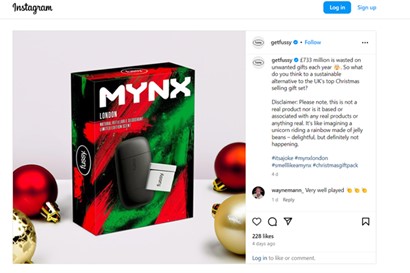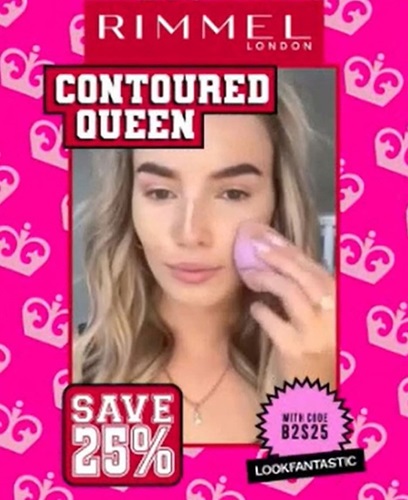Consumer spending on beauty and personal care products hit £11.3 billion in 2023 and, in an increasingly saturated market, advertising is key to brand visibility.
However, due to the nature of beauty products and the potential for adverts to reach a perhaps vulnerable audience, the ASA is consistently vigilant in monitoring beauty-related adverts and campaigns, especially on social media. Since the last issue of Beauty Watch, it has issued a number of rulings which help to remind brands of their obligations.
Below, we explore three key issues to keep in mind when preparing advertising materials focused on the beauty industry.
1. Don’t disparage competitors
When done correctly, directing humorous advertising messages at a competitor brand can be a powerful marketing tool.
However, this can be a difficult line to tread. Brands must ensure that any comparison with a competitor, whether direct or implied, is objective, verifiable and does not stray into discrediting or denigrating the competitor (irrespective of whether or not a claim was true).
In a recent ruling, the ASA upheld a complaint from Unilever, owner of the Lynx brand, against independent deodorant company Fussy Ltd's Instagram post, which appeared to disparage Lynx products. The ASA concluded that the ads went beyond a robust and objective comparison between the products, and discredited and denigrated the Lynx brand.
The post featured an image of a fictional refillable deodorant product called 'Mynx' with black, red and green packaging and bore the caption:
"£733 million is wasted on unwanted gifts each year. So what do you think to a sustainable alternative to the UK's top Christmas selling [sic] gift set? Disclaimer: Please note, this is not a real product nor is it based or associated with any real products or anything real. It's like imagining a unicorn riding a rainbow made of jelly beans – delightful, but definitely not happening. #itsajoke #mynxlondon #smelllikeamynx #christmasgiftpack."

Fussy Ltd's CEO shared a similar post on his personal LinkedIn.
Although it denied the post alluded to and denigrated Lynx's products, Fussy did acknowledge some consumers may have interpreted the posts as such and agreed to take them down.
The ASA decided that the similarity between 'Mynx' and 'Lynx' and the identical colour scheme and font meant the posts were 'readily recognisable' as a reference to Lynx.
In this context, the term 'unwanted gifts' was pejorative and suggested Lynx products were of lower value and less desirable than competitor products, including Fussy's own offerings.
Interestingly, the ASA also found the term 'Mynx' itself, in relation to Lynx, to be derogatory, carrying connotations of 'a flirtatious person who enjoyed creating trouble for others'.
Fussy's posts were deemed to breach Rules 3.35 (Comparisons with Identifiable Competitors) and 3.42 (Imitation and Denigration) of the CAP Code.
2. Target content appropriately
Brands using social media as a way to market their products and services should be aware of the potential reach of their posts. This applies to all promotions, but particularly for example content including cosmetic interventions, as well as alcohol, gambling, e-cigarettes, and anything which risks causing offence.
Rule 1.3 of the CAP Code requires marketers to consider their responsibility to consumers and society when preparing their marketing communications. This includes maintaining proper evidence for any claims, especially health-related claims, which consumers are likely to regard as objective, as well as ensuring adverts are not inappropriate for the prospective audience.
At the end of last year, the ASA issued two decisions which reminds brands to be cautious when adopting social media trends and popular lingo, and to take all necessary precautions to ensure their content is only seen by an appropriate audience.
The ASA itself challenged a TikTok post by a beauty parlour (Golden Tanning Salon) featuring a person lip-synching to a sound bite of Khloe Kardashian saying, "Like no one cares. You don't get an award 'cos you watch less TV" with superimposed text stating 'i [sic] don't get sunbeds because they are bad for u' then 'sunbeds have lots of benefits including, [sic] increasing vitamin D, fights inflammation, rebuilds collagen & helps with blood circulation whilest [sic] also getting that golden tan' on the basis that it was misleading, irresponsible and inappropriately targeted.
All three challenges were upheld. The advertiser was unable to provide evidence of its health-related claims and had not made use of TikTok's audience control feature to ensure its post did not reach anyone under the age of 18.
Although it was a popular trend at the time, the ASA also considered that the use of the specific soundbite from Keeping up with the Kardashians (used in a popular TikTok meme to poke fun at criticism) alongside the text 'I don’t get sunbeds because they are bad for u' would be understood as mocking those who raised concerns about the use of sunbeds, including medical professionals, encouraging consumers to disregard them.
The post therefore breached Rules 1.3 (Responsible Advertising), 3.1 (Misleading Advertising), 3.7 (Substantiation), 12.1 (Medicines, Medical Devices, Health-Related Products and Beauty Products) and 12.25 (Cosmetic Interventions) of the CAP Code. See the ASA's full decision.
Most major platforms, including TikTok, Instagram and Facebook, let users target posts to specific audiences based on factors such as age, location and gender. The ASA has also issued specific guidance around targeting and placement.
However, in some cases, using age targeting controls may not be enough to ensure brands comply with their social responsibilities.
In September 2023, a paid video advert from Rimmel London on Facebook showing influencer Lana Jenkins applying concealer and featuring the caption 'Get ready to slay this back to school season 📚 ✨. Get 25% off Multi-Tasker Concealer and other Rimmel faves with code B2S25 only at lookfantastic.com' received two complaints. The complaints alleged the post played on young girls' insecurities.

Rimmel claimed that its ad targeted women aged 18-35 and that, although some might view wearing makeup in a negative light, for others it was a form of self-expression and liberation.
The ASA upheld the complaints. Although 'back to school season' could refer to university students, parents and teachers as well as school-aged children, in conjunction with the bright pink colour scheme, emojis and fluffy pink pen held by Ms Jenkins in the video, viewers would understand it as referring to teens returning to school after the summer holidays.
In particular, the word 'slay' was a popular term amongst teens meaning to impress, and its use in 'Get ready to slay this back to school season' implied girls and young women were more likely to succeed or do well on their return to school if they wore makeup.
It was noted that Rimmel had used age and interest-based targeting tools to steer the content away from under-18s but this was not sufficient to prevent all under-18s from seeing the post, and therefore the ASA considered whether the ad was irresponsible for that audience.
Overall, the ad was deemed irresponsible in its inappropriate targeting and exploitation of young women's insecurities about their appearance, in breach of CAP Rule 1.3 (Social Responsibility). See the ASA's full decision.
3. Be careful with influencer promotions
Section 2 of the CAP Code requires that adverts must be obviously identifiable as such, regardless of their targeting or medium.
Where an advert is placed in a newspaper, labelled as 'promoted' on social media, or printed on a leaflet, it will usually be obviously identifiable as an advert based on its content and the context in which it appears. However, in other cases such as influencer collaborations and 'advertorials', the content may be less obviously an advert and additional measures must be taken to identify it as such.
Cosmetics brand BPerfect recently fell foul of this when social media influencer Stephanie Vavron posted a TikTok video preparing for her day using the company's products. The video began with Ms Vavron holding up a BPerfect makeup bag and saying, 'Get ready with me using my BPerfect collab'.
BPerfect did not respond to the ASA's enquiries, but Ms Vavron's management claimed BPerfect had not paid for the video – it had arisen organically in response to a user's comment and Ms Vavron was not compensated for the video, save for any money received through her affiliate links listed on separate videos.
Although Ms Vavron mentioned her 'BPerfect collab' and that some of her followers may be aware of this collaboration, the ASA deemed this insufficient to establish that Ms Vavron was promoting her own product with BPerfect.
Therefore, the video was not obviously identifiable as a marketing communication, in breach of CAP Rules 2.1 and 2.3 (Recognition of Marketing Communications).
With the burgeoning of social media and online stardom in recent years, the use of influencers in social media campaigns and the absence of regulation in this area has been an especially hot topic. In 2022, the House of Commons Digital, Culture, Media and Sport Committee issued its 'Influencer culture: Lights, Camera, inaction?' report, urging the then government to address these regulatory gaps and drawing special attention to the dangers influencer content can pose to children.
The ASA has also sought to address the issue, producing a number of helpful guides around using influencers in advertising and marketing campaigns. Last year, it released specific guidance for influencers themselves, detailing how they can make it clear to their audience that adverts are indeed adverts and the consequences of not playing by the rules.
In short, influencers are powerful personalities and can be extremely useful tools in brand promotion, but brands should monitor influencer content and be aware of the need to ensure transparency and integrity in their content.